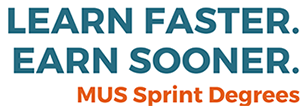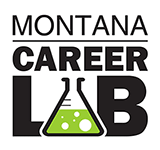Loans
Student loans are available for students and parents to help pay for the cost of a student's education after high school. Student loans can come from the federal government, from private sources such as a bank or financial institution, or from other organizations. Loans may be a necessity to attend and complete college; however, be mindful of your debt load and borrow only what you need as a loan is money you borrow and must pay back with interest. If you decide to take out a loan, make sure you understand who is making the loan and the terms and conditions of the loan.
Loan Types
Federal Student Loan Programs
The U.S. Department of Education’s federal student loan program is the William D. Ford Federal Direct Loan (Direct Loan) Program. Under this program, the U.S. Department of Education is your lender. There are four types of Direct Loans available:
- Direct Subsidized Loans - loans made to eligible undergraduate students who demonstrate financial need to help cover the costs of higher education at a college or career school.
- Direct Unsubsidized Loans - loans made to eligible undergraduate, graduate, and professional students, but eligibility is not based on financial need.
- Direct PLUS Loans - loans made to graduate or professional students and parents of dependent undergraduate students to help pay for education expenses not covered by other financial aid. Eligibility is not based on financial need, but a credit check is required. Borrowers who have an adverse credit history must meet additional requirements to qualify.
- Direct Consolidation Loans - allow you to combine all of your eligible federal student loans into a single loan with a single loan servicer.
Private Student Loans
Private loans are made by private organizations such banks, credit unions, and state-based or state-affiliated organizations, and have terms and conditions that are set by the lender. Private student loans are generally more expensive than federal student loans.
- Private Student Loan - a nonfederal loan made by a private lender, such as a bank or credit union. The terms and conditions of private student loans are set by the lender, not the federal government.
- If you’re not sure whether you’re being offered a private loan or a federal loan, check with the financial aid office at your school
Eligibility
Eligibility for all student loans is determined by your school’s financial aid office from information provided on the Free Application for Federal Student Aid (FAFSA). For more information or to complete the FAFSA, visit Financial Aid.
To apply for a federal student loan, you must first complete and submit a Free Application for Federal Student Aid (FAFSA®) form. Based on the results of your FAFSA form, your college or career school will send you a financial aid offer, which may include federal student loans. Your school will tell you how to accept all or a part of the loan.
Before you receive your loan funds, you will be required to
-
Complete entrance counseling, a tool to ensure you understand your obligation to repay the loan; and
-
Sign a Master Promissory Note, agreeing to the terms of the loan.
Contact the financial aid office at the school you are planning to attend for details regarding the process at your school.
Master Promissory Notes
The Master Promissory Note (MPN) is a legal document in which you promise to repay your loan(s) and any accrued interest and fees to the
U.S. Department of Education. It also explains the terms and conditions of your loan(s).
You may receive more than one loan under an MPN over a period of up to 10 years to
pay for your or your child’s educational costs, as long as the school is authorized
to use the MPN in this way and chooses to do so.
Student Loan Repayment
When it comes to repaying your student loan(s), there’s a lot to consider. Understanding the details of repayment can save you time and money. Ensure you are aware of the following...
- any exit loan counseling requirements
- what repayment plans options are available
- when you must begin making payments
- how to make your payment
- how to pay off your loan faster
- what to do if you have trouble making payments
Active student loan management is essential to managing your student debt. Before repayment begins, develop a plan that puts you on track to pay back your loan on time and in full.
MUS Loan Repayment Incentive Programs
You are generally required to repay your student loan, but in certain situations, your loan may be forgiven, canceled, or discharged. There are State and Federal programs available to potentially discharge or forgive all or a portion of your federal student loan debt, if you meet specific qualifications. In addition, Montana has several loan repayment programs, funded through the Legislature, that are focused at assisting with student debt relief related to Medical Education. These include the Montana Rural Physician Incentive Program (MRPIP) and the Montana Institutional Nursing Incentive Program (MINIP).






